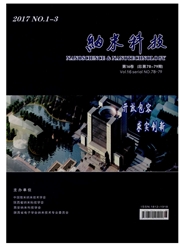

 中文摘要:
中文摘要:
通过介入导管将药物和基因载运到血管内病灶部位,并在血管组织中长期释放。以生物可降解聚合物PLGA为基材,采用超声乳化/溶剂挥发法分别制备包载药物和基因的纳米粒子,对纳米粒子进行了表面修饰提高血管吸收性;用载反义MCP-1基因的纳米粒子转染平滑肌细胞,对平滑肌细胞基因组DNA进行PCR扩增;用兔髂总动脉和颈总动脉血管损伤模型进行灌注实验。体外释放实验表明均具有缓慢释放作用,凝胶电泳实验证明基因的结构未遭破坏。说明纳米粒子是非常理想的血管内导向定位药物和基因控释的载体。
 英文摘要:
英文摘要:
The objective of this paper is to develop a nanometer-sized drug release system which can achieve catheter-based intra-vascular site-specific delivery of drugs and genes, A ultrasound-emulsion/solvent-evaporation technique was employed to make the nanoparticles (NPs) using a biodegradable polymer PLGA as matrix material. The NPs were surface modified to enhance absorbability to the vascular wall, NPs which containing anti-MCP-1 gene was tested in vitro and cell tranfection, and was detected through PCR proliferation. NPs were tested in vivo by single infusion after balloon injury in the rabbit iliac and carotid models. In vitro drug release evaluation showed a sustained controlled release. The biological function of encapsulated gene was intact. The anti-MCP-1 NPs induced great cell transfection as determined by PCR and electrophoresis. Infusion of antisense MCP-1 gene nanoparticles in rabbit balloon injury model, can significantly inhibit intimal hyperplasia. In conclusion, Nanoparticle is a potential intravascular drug delivery preparation.
 同期刊论文项目
同期刊论文项目
 同项目期刊论文
同项目期刊论文
 期刊信息
期刊信息
